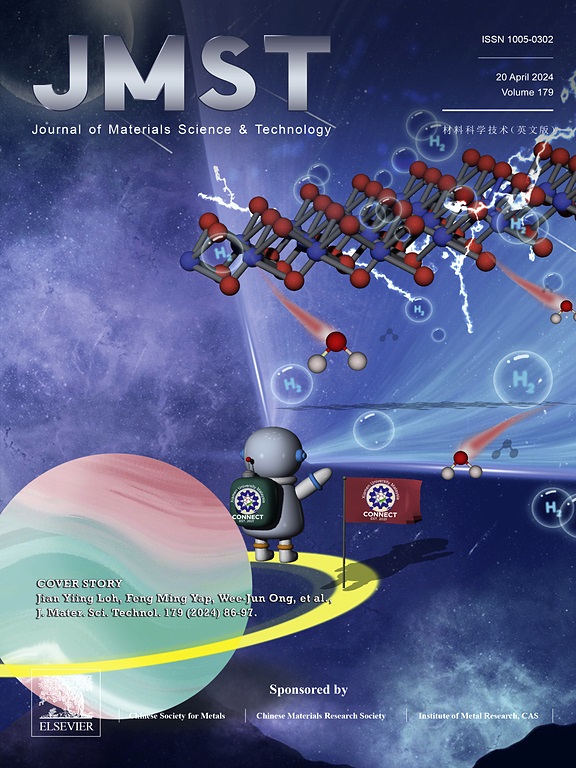Unraveling the CMAS corrosion mechanism of CrTaO4: A promising dual function oxidation and thermal protection material for RHEAs
IF 11.2
1区 材料科学
Q1 MATERIALS SCIENCE, MULTIDISCIPLINARY
引用次数: 0
Abstract
CrTaO4 has been found to play a pivotal role in the protection of refractory high-entropy alloys (RHEAs) from high-temperature oxidation and thermal attack due to its high melting point, low thermal conductivity, close thermal expansion coefficient (TEC) to RHEAs. These appealing properties enable CrTaO4 as a new type of protective scale material for high-temperature applications such as in air breathing jet engines. For such engine applications, CaO-MgO-Al2O3-SiO2 (CMAS) corrosion is a critical issue. However, the corrosion behavior of CrTaO4 under CMAS attack remains unknown so far. Here, the corrosion resistance of CrTaO4 to molten CMAS is comprehensively studied. It is demonstrated that the CMAS corrosion resistance is significantly superior over commercial yttrium-stabilized zirconia and the commonly investigated thermal barrier coating materials. Element and phase compositional analyses indicate dense and CMAS corrosion-resistant layers are established between CMAS and the CrTaO4 substrate. The interface reaction between the CrTaO4 substrate and CMAS at 1250 and 1300°C gives rise to a dense layer composed of CaTa2O6 and Mg(Cr,Al)2O4 spinel just beneath the molten CMAS. At 1350°C, a phase composition gradient layer, composed of crystalline phases CaTa2O6/CaTa2O6 + Mg(Cr,Al)2O4/CaTa2O6 + Cr2O3, is formed. With increased calcium consumption due to more Ca-containing crystalline phase formation upon elevating temperature, the Ca/Si ratio in CMAS melt declines, thereby increasing the viscosity of the melt and mitigating the penetration of CMAS into the CrTaO4 substrate.

求助全文
约1分钟内获得全文
求助全文
来源期刊

Journal of Materials Science & Technology
工程技术-材料科学:综合
CiteScore
20.00
自引率
11.00%
发文量
995
审稿时长
13 days
期刊介绍:
Journal of Materials Science & Technology strives to promote global collaboration in the field of materials science and technology. It primarily publishes original research papers, invited review articles, letters, research notes, and summaries of scientific achievements. The journal covers a wide range of materials science and technology topics, including metallic materials, inorganic nonmetallic materials, and composite materials.
 求助内容:
求助内容: 应助结果提醒方式:
应助结果提醒方式:


